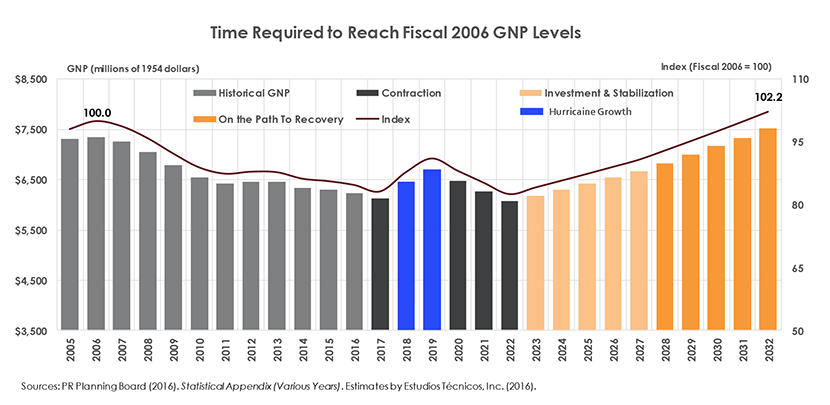
Summary Report by Estudios Tecnicos as submitted to the Puerto Rico Builders Association
Hurricane Maria made landfall in Puerto Rico on Wednesday, September 20th, with sustained winds of 155 mph and gusts of up to 175 mph, causing tremendous devastation and destruction to the island’s infrastructure.
The impact of Hurricane Maria is estimated between $53.8 and $67.6 billion – Reconstruction costs alone could total $23.0 to $28.9 billion. Lost business activity was estimated at $13.7 to $17.2 billion.
In response to the aforementioned damage, over $6 billion dollars have been injected in the island’s economy through a combination of federal relief funding, central government investment, the Red Cross, and private insurers’ disbursements.
![Microsoft Word - Draft of Cost of Maria (rev)[1].docx](https://agandt.com/wp-content/uploads/2022/05/Funding-Sourcesi-1-1.jpg)
Given past experiences with hurricanes in Puerto Rico, an increase in GNP is expected in 2018 and 2019.
Investment in construction would almost triple over the next two fiscal years.
Most of these reconstruction costs are related to housing units that need to be rebuilt over the coming months. Estimates place 40,000-60,000 homes destroyed and an additional 160,000-180,000 suffered minor to moderate damage.
![Microsoft Word - Draft of Cost of Maria (rev)[1].docx](https://agandt.com/wp-content/uploads/2022/05/damaged-homesi.jpg)
However, the expansion in economic activity is only temporary. After fiscal 2019, Puerto Rico will likely return to a declining trend in GNP growth, as other socio-economic indicators will likely continue to deteriorate.
![Microsoft Word - Draft of Cost of Maria (rev)[1].docx](https://agandt.com/wp-content/uploads/2022/05/Time-to-Recoveryi.jpg)
After 2019 that should average a negative -3.2% between 2020 and 2023. Between 2023 and 2027 1.9% growth is assumed, 2.4% between 2028 and 2032, and finally 3.0% growth from 2033 onward. The economy would reach 2006 levels by 2032.
This long recovery period is a further indicator of the massive structural damages that the economy has sustained not only from Maria but also from the prolonged economic contraction.
Economic recovery will require major structural adjustments and not simply marginal changes to improve efficiency in the public sector.





No comment yet, add your voice below!